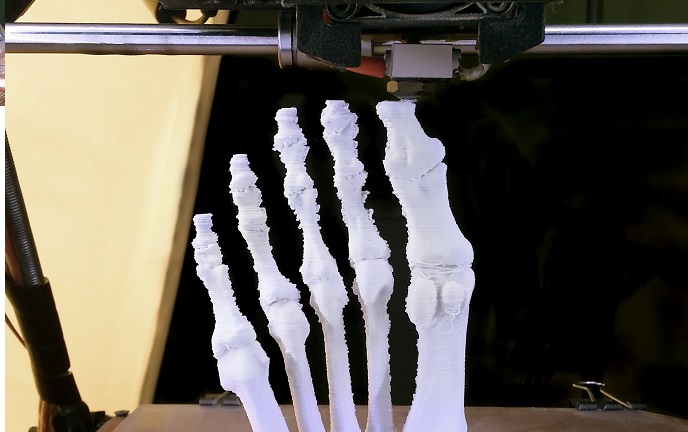Hybrid 3D printing produces scaffolds for bone regeneration
Over the last decade, the market for Additive Manufacturing (AM) has increased impressively year on year. Factors such as localised production, limitless shapes, full artefact customisation and no waste material are driving growth. Perhaps chief amongst the advantages is AM’s ‘Design for Function’ feature, whereby artefact production is now not constrained by limitations imposed by the manufacturing processes, but rather prioritises the end use for the piece. The EU-funded FAST (Functionally graded Additive Manufacturing scaffolds by hybrid manufacturing) project adopted AM techniques to develop and demonstrate a 3D printing machine which combined a hybrid printing process with a physical-plasma based coating to produce scaffolds for bone regeneration. FAST also identified candidates for antibiotic substances suitable for incorporation into the scaffold material, as well as demonstrating cell growth on the surfaces of the printed and coated scaffolds. Building scaffolds from polymer composites A range of industries, such as automotive and aerospace, benefit from AM’s ability to produce complex and highly customised parts with a number of integrated functions, and in a cost-efficient manner. But AM techniques are also increasingly used to produce medical devices. Customised implants, for example, offer advantages such as improved preoperative planning, healthcare system cost savings due to shorter surgery times, lengthened implant lifetime, and increased patient comfort with fewer post-surgery complaints. This is particularly true for the manufacture of scaffolds for tissue engineering (TE) and regenerative medicine, where the technology has now been in use for over a decade. As project co-coordinator Prof. Lorenzo Moroni explains, “These scaffolds are one of the fields where AM’s ‘Design for Function’ characteristic gives it the edge over other production techniques. All the necessary considerations about mechanics, geometry (porosity and shape), biomaterial, bio-active molecules and surface chemical groups can be integrated into one design.” FAST’s new 3D polymer printer can print and subsequently coat the scaffold almost as a single step, and within one machine. Adopting a layer-by-layer method, the technology applies a coat throughout the implant, designed to enhance cell adhesion and so promote bone regeneration. The technology works by combining the melt compounding of nanocomposites with bio-functionalised fillers directly in the printing head, along with the use of atmospheric plasma technologies during the printing process itself. “As the technology controls the fibre composition and density, as well as the location of the coating, the operators can design the scaffold’s shape, porosity, mechanical stability and biochemical properties,” says Prof. Alessandro Patelli, consortium co-coordinator. As well as being biodegradable, these scaffolds contain graded mechanical and biochemical properties customised for individual patients. This proved to be the most challenging aspect of the project as Moroni recalls, “Developing a printer head that is able to create continuous gradients resulted in trials with a few functional prototypes.” Helping build a revitalised healthcare system FAST’s technology promises to contribute to the improved efficiency of Europe’s healthcare system, with good prospects especially for applications in bone repairs for orthopaedic, cranial, craniofacial and maxillofacial surgeries. But first the technology will have to undergo phase I clinical trials, if the animal tests show promising results compared to current treatments. After that, the technology will have to meet the requirements for regulatory approval, anticipated to be within three to six years from the end of the project. “FAST is expected to strengthen the market competitiveness globally of our small and medium-sized partner companies securing existing jobs, with an expanded product line creating new ones,” Patelli says. Currently, the team are testing FAST scaffolds further, through in vitro and in vivo studies, while looking for suitable industrial partners for clinical studies.
Keywords
FAST, additive manufacturing, polymer, nanocomposite, scaffolding, tissue, bone, regeneration, 3D printing, surgery, implant







